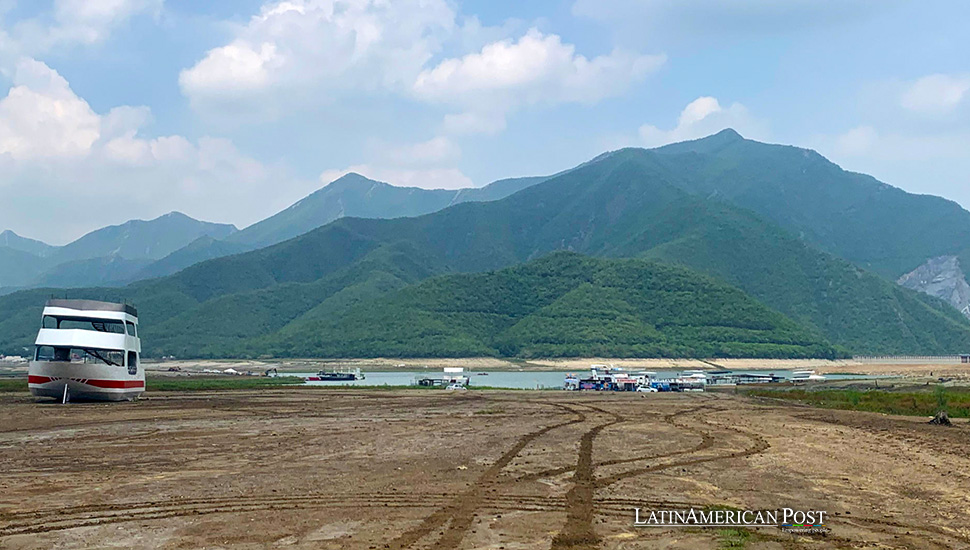Drought’s Grip on Mexico: A Looming Threat to Agriculture and Inflation Across Latin America

As Mexico grapples with severe droughts, the repercussions ripple through its agri-food sector, escalating costs and pushing inflation upwards. This environmental crisis poses a stern challenge for Mexico and neighboring Latin American countries, underscoring a pressing need for regional resilience against climate-induced adversities.
Mexico’s Silent Crisis: Drought Ravages the Nation
The earth cracks open in the vast stretches of Mexico, a silent testament to the severe droughts ravaging the country. These are not isolated incidents but part of a disturbing trend that has seen more than 80% of Mexican municipalities grappling with drought conditions as of the start of the year, according to the National Meteorological Service (SMN). This dire situation places enormous strain on the country’s agri-food sector, leading to rising costs and, consequently, inflation—a situation echoed across Latin America, where climate variability hits hard on economies heavily reliant on agriculture.
The Bank of America (BofA) report, spearheaded by chief economist for Mexico and Canada, Carlos Capistrán, paints a grim picture of the ongoing drought’s impact on Mexico’s economy. With an alarming increase in municipalities facing drought conditions since 2014, the report highlights a decade-long struggle with water scarcity that has intensified, leading to more prolonged dry spells. This environmental crisis exerts upward inflation pressure, mainly through the prices of fruits and vegetables, affecting the core inflation which excludes volatile items like energy.
BofA’s Forecast: Inflation Projections and Anticipation of Rate Cut
BofA’s analysis indicates that Mexican localities suffering from droughts could see inflation increase by an average of 10 basis points in the following six months and up to 75 basis points in the long term. As the drought is expected to persist, inflation projections for the year-end hover just below 5%. This situation has led BofA to anticipate a rate cut by Mexico’s central bank as early as March, given the expected decline in core inflation.
The drought in Mexico is a symptom of a more significant issue affecting Latin America. Countries across the region, from the arid highlands of Peru to the fertile plains of Argentina, are feeling the impact. Climate change has made weather patterns more unpredictable, with prolonged dry periods disrupting traditional farming cycles and threatening food security. This has economic and social implications as communities struggle with water scarcity and crop failures.
The situation in Mexico serves as a cautionary tale for its neighbors. Countries like Guatemala, Honduras, and Nicaragua have also faced significant agricultural challenges due to erratic rainfall, affecting their economies and exacerbating food insecurity. Brazil, another agricultural powerhouse, has seen its share of drought-related issues, impacting coffee and soybean production, commodities crucial to the global market.
The Latin American context underscores the interconnectedness of environmental challenges and economic stability. As nations navigate the complexities of climate change, the need for sustainable agricultural practices and water management strategies becomes increasingly apparent. Investing in drought-resistant crops, efficient irrigation techniques, and regional cooperation can help mitigate the impact of these climate-induced challenges.
Economic Resilience: Diversification and Adaptation
Moreover, the economic implications of drought in Latin America highlight the importance of diversifying economies and enhancing resilience to climate variability. As countries like Mexico face the dual challenges of managing drought and controlling inflation, the lessons learned can inform broader strategies for climate adaptation and economic stability in the region.
Also read: Major Shift in Global Trade as Mexico Surpasses China as Top U.S. Import Source
The drought conditions in Mexico, with their far-reaching implications for inflation and the agri-food sector, are a stark reminder of the broader environmental and economic challenges facing Latin America. As the region looks to the future, fostering resilience against climate-induced adversities will be crucial in safeguarding economic stability and ensuring the well-being of its populations. This situation calls for a concerted effort from governments, the private sector, and international bodies to address the root causes of climate change and work towards sustainable solutions that can withstand the test of time and nature.




